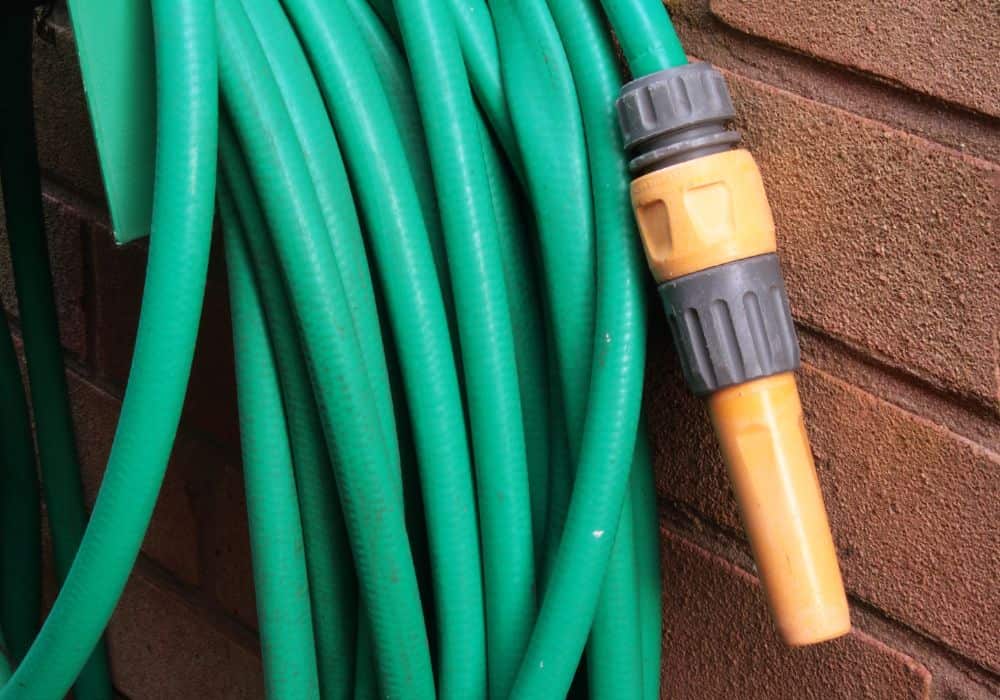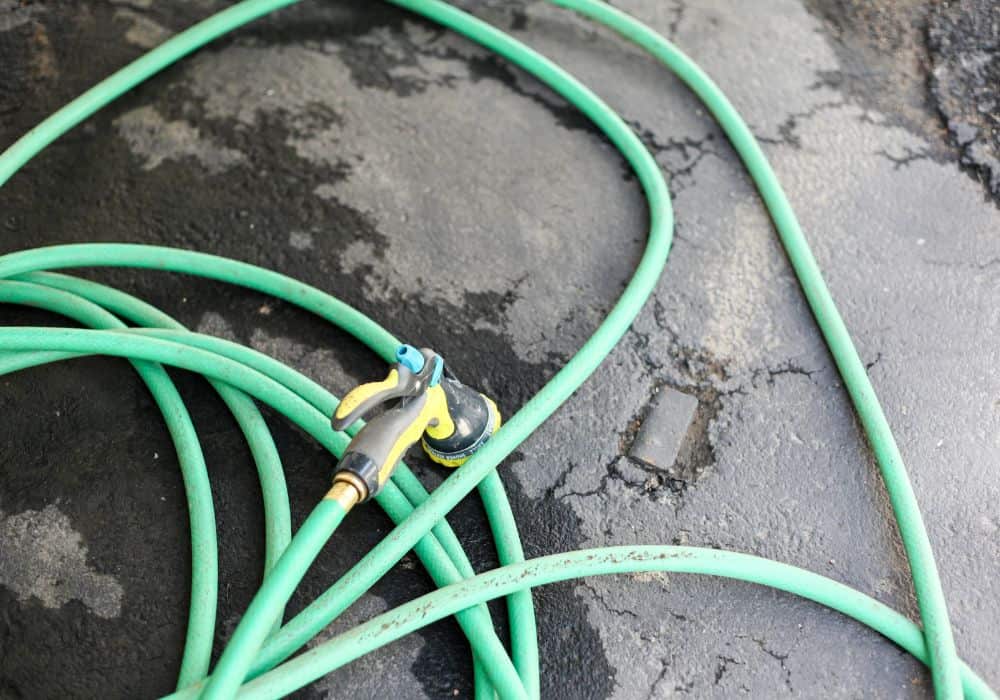PVC pipes are some of the most common and versatile piping in our homes and workplaces. They can carry a variety of things, including water, sewage, and electrical wires, and with UV resistances, do surprisingly well when exposed to direct sunlight.
And because they are very affordable, many people use PVC pipes in their gardens to expand their irrigation, chart water to a corner of their garden or install innovative sprinkler systems across vegetable patches and lawns.
In this article, we’ll show you how easy it is to hook up your standard garden hose to a PVC pipe – no plumbing skills are required! We’ll go through each piece of equipment and discuss a variety of scenarios to help you connect everything quickly and securely!
What do you need to connect a garden hose to PVC pipes?
Connecting PVC pipes to a garden hose is often foolproof – it’s quick, easy, and cheap. You only need some patience and some standard equipment to get started.
There are two ways we recommend attaching the hose to the pipe. The first uses a series of connectors, adaptors, and PVC to join the plumping system securely. Afterward, we will also highlight the popular heating method people use with rubber to extend water pipes.
Hooking a hose to PVC pipe via threaded connections and adhesive
1. Finding the right type (male or female)
Connecting your PVC pipe to your hose is simple, as long as you have the correct adapter. Because most, if not all, outside spigots, taps, or faucets at our homes are made of brass, you need a quality adapter to connect plastic to metal and ensure a waterproof seal takes hold.
To find the correct adaptor, you must first examine the connection of your spigot and garden hose and work out if you need a male hose thread adaptor (MHT) or a female hose thread adaptor (FHT). Detach all accessories from your hose, including nozzles and sprayers, to get a closer look at the threading.
A female hose thread and spigot will have internal threading, whereas male threads will be external. You must connect male to female and vice versa – otherwise, they won’t link properly, will eventually break, or spot leaks when water pressure increases.
2. Finding the right size
Once you figure out the type of adapter, you will need to find the right size adapter. Only then will the pipe and tap fit securely together.
Most, if not all, manufacturers use the garden hose’s internal diameter to separate adopters, fixtures, and fittings. This information is often printed on the size of the hose for convenience.
If it’s missing, you can work out the internal diameter pretty quickly by:
- Use the outer diameter: Simply measure the outside of the hose, as this measurement usually corresponds to an internal diameter. For example, 77 inches often means your hose is a ½-inch hose. If the outside diameter is 2”, then you most likely have a ¾-inch hose.
- Dowel rods: Inserting dowel rods into the garden hose can help you measure the diameter. For instance, if a ¾ dowel rod sits snugly, the diameter is ¾ inches.
You cannot use a tape measure to work out the diameter because the ends of the garden hose are often more expansive than the rest. The end of the PVC pipe may have also become distorted from pulling and force.
3. Secure pipes in place before connection
If cutting the PVC pipe, ensure you make a clean cut with a hacksaw. Leave at least 2 inches between the end of the pipe and the siding for the adapter.
Once cut, use sandpaper or a deburring knife to smooth out the edges. If the spigot is high on the wall, you may want to secure the pipe upright using a clamp.
4. You will need a PVC primer
Apply a coat of PVC primer around the end of the pipe, and inside o The primer sets off a chemical reaction within PVC, making it much easier to bend and fit into connections and adaptors. The primer should dry in about 10 to 20 seconds.
5. Apply PVC glue
Next, apply a layer of PVC glue to the outer side of the pipe and the inside of the adapter. The glue will set rapidly, so you need to be quick. Slip the adaptor onto the pipe and twist it to secure it.

6. Create a waterproof seal with tape
Finally, wrap plumbing tape (or Teflon tape) around the threads of the male adapter. Plumbing tapes are necessary for threaded connections, as it helps create a waterproof seal.
Wrap the tape in the same direction as the pipe will screw into the adapter – this limits friction and ensures the tape won’t bundle up and tear. Wrap the tape around five or six times, ensuring there’s always tension.
7. Secure the hosing, pipe, and spigot together
Finally, now that the garden hose and PVC pipe are hooked, it’s time to secure them both to the spigot or faucet. Use adjustable pliers to hold the pipe in one position while you attach it to a solid surface, like a house siding or a post.
Simply screw the adapter onto your spigot, and use a wrench to secure it tightly. Turn on a minimal amount of water and check for any leaks; if there is slight spraying at the facet, this implies the connector is not correctly aligned, and you need to screw it on again.
Hooking a hose to PVC pipe via heating
Many viral videos swear by the heating method as a simple way of connecting a water hose to PVC pipes. You won’t need any connectors, adapters, or taping, meaning it’s incredibly cheap to implement.
The heat method temporarily distorts the PVC and hosing’s shape. This method is unorthodox but can be effective if the hose and pipe are near exact matches in diameter. There’s also no need for glue; all you need is a pair of scissors and a lighter or torch.
1. Heat the head of the hose
Apply a small amount of heat to the end of your garden hose. In time, this will increase its elasticity and allow you to mold and expand its diameter. Place a dowel rod or similar shape into the hose to expand its form while keeping your fingers burn-free.
If part of the hose has become torn or distorted, use sharp scissors to cut a clean vertical line down.
8. Insert the hose into the PVC Pipe
Coat the PVC pipe’s end with soap and water or grease to lubricate it. Gently push the now expanded mouth of the garden hose around the PVC pipe a couple of inches. Be careful not to push too much, as the hose will be in a vulnerable state and may tear. Furthermore, only the end of the hose will expand; be careful not to rupture unheated areas.
9. Clamp the connection in place
Finally, lock the hose and the PVC pipe using a pipe clamp or steel wire. 25mm clamps are often an ideal size for an outdoor hose. You can opt for many materials, but plastic pipe clamps often work best with hosing because of their moisture resistance, can have UV-resistances when treated, and look the part in gardens. Gradually increase the water supply and examine the clamp to see if the seal holds.

Conclusion
PVC pipes are a fantastic tool any homeowner can use to revolutionize their gardening practices. They’re easy, flexible, and can carry any type of water over long distances, and if treated with care, even when exposed to sunlight.
We’ve explored two methods above; using threading connectors and applying a PVC adhesive to secure your hose to the tap, and the unorthodox heating method that uses the flexibility of rubber hosing to our advantage in making a connection.
Regardless of your preferred method, expanding your water network with PVC pipes is straightforward, cheap, and should only take a few minutes of your time. So long as you have everything you need at hand.
If you have any questions about the process or have tips on connecting garden hosing with PVC you’d like to share, please leave a comment below.
Always remember:
- Examine the hose connector and hose pipe threads carefully to work out if you need a male or female counterpart.
- Gradually increase water flow and examine closely for any spraying or leaks, especially at the hose fitting.
- PVC pipes work well outside. If your hose is indoor, consider using PEX or CPVC pipes.
